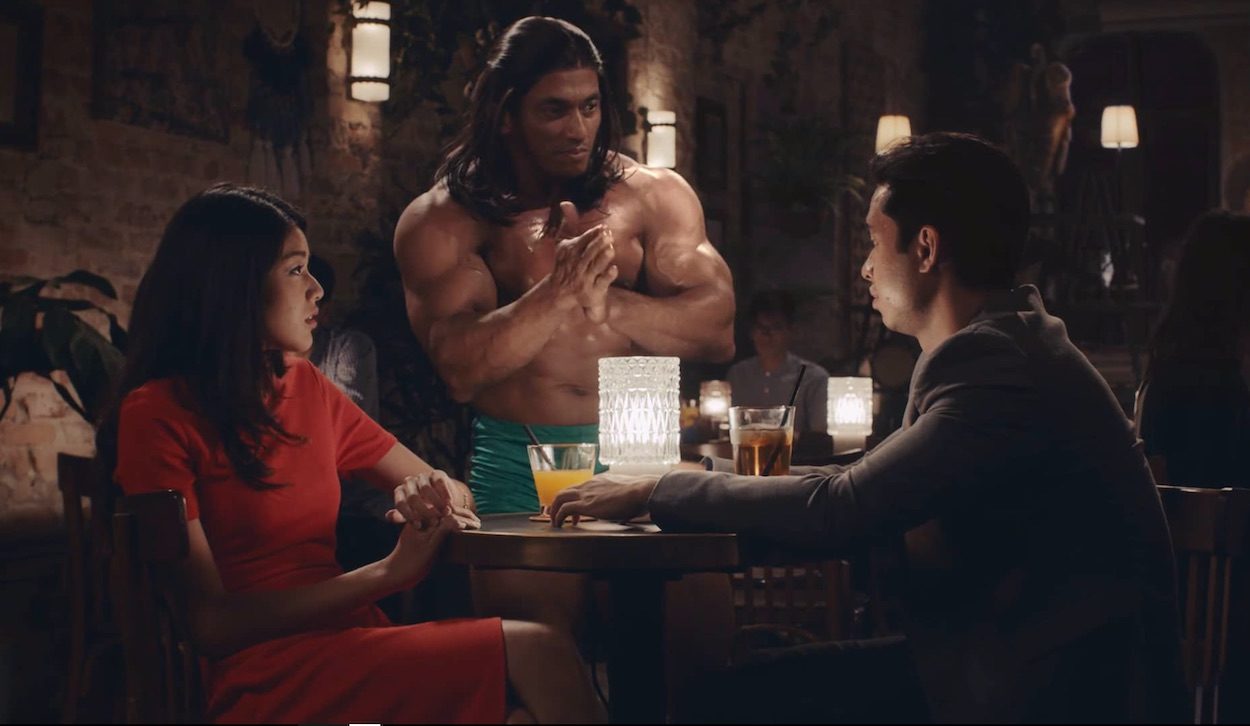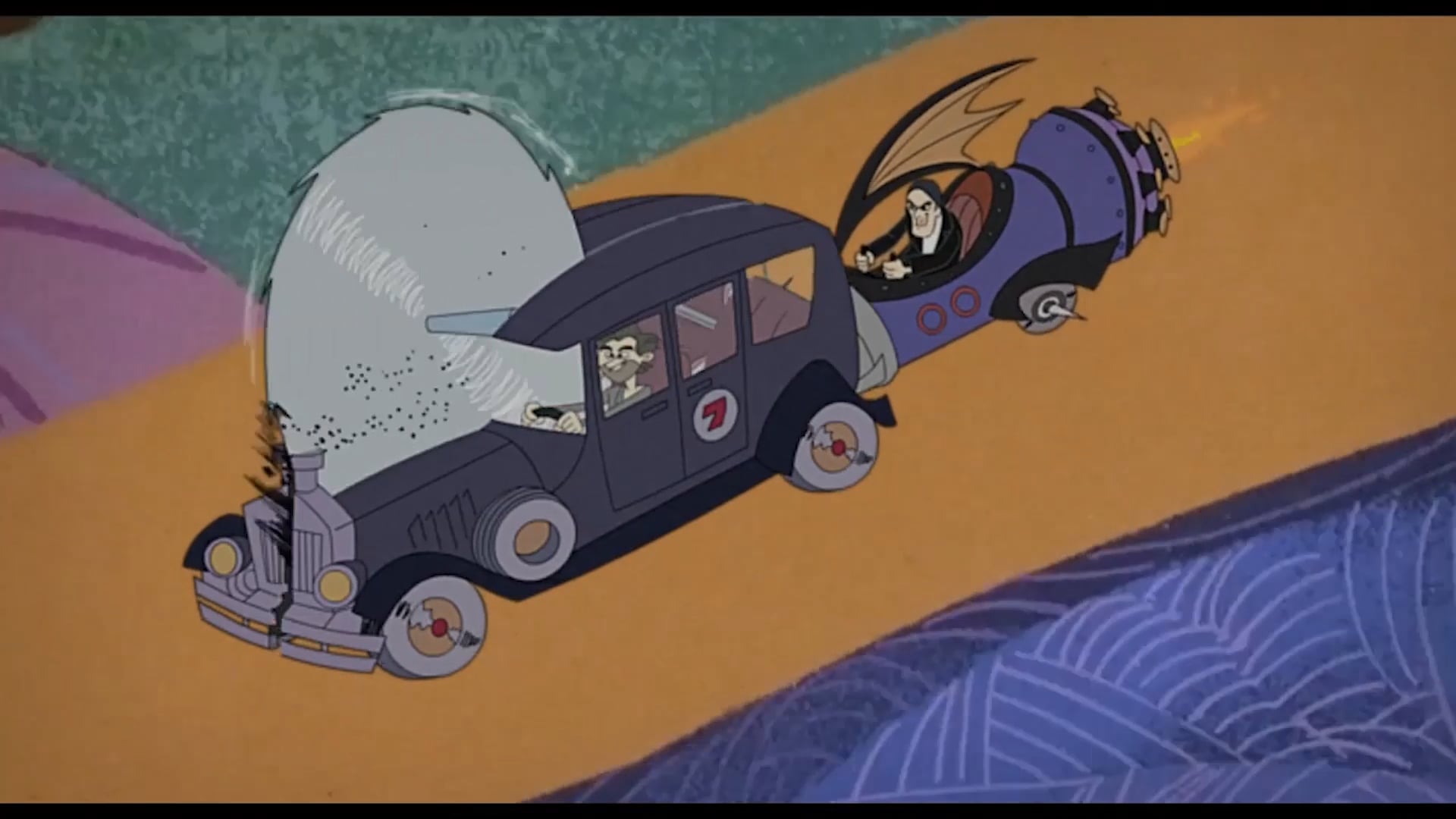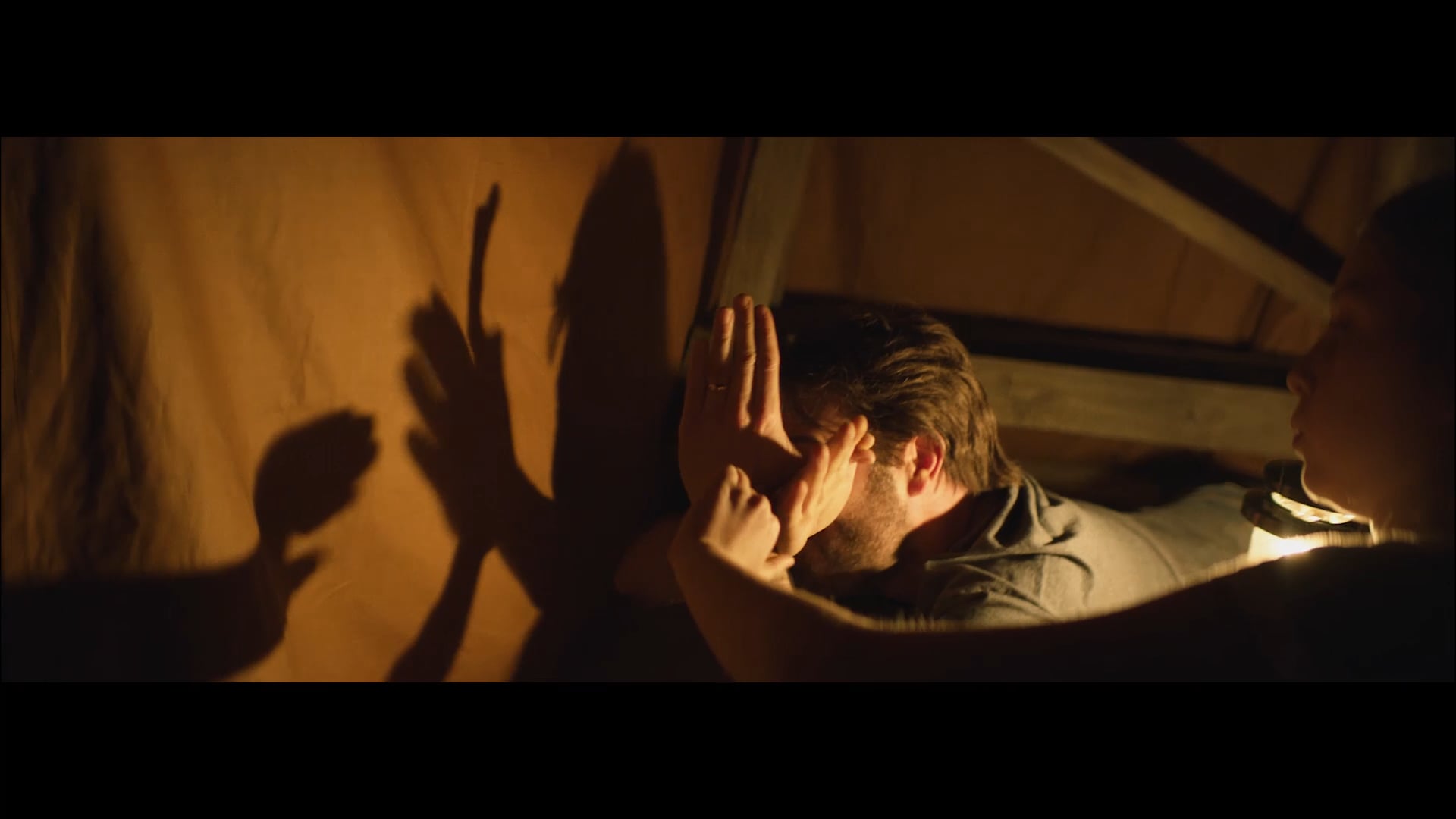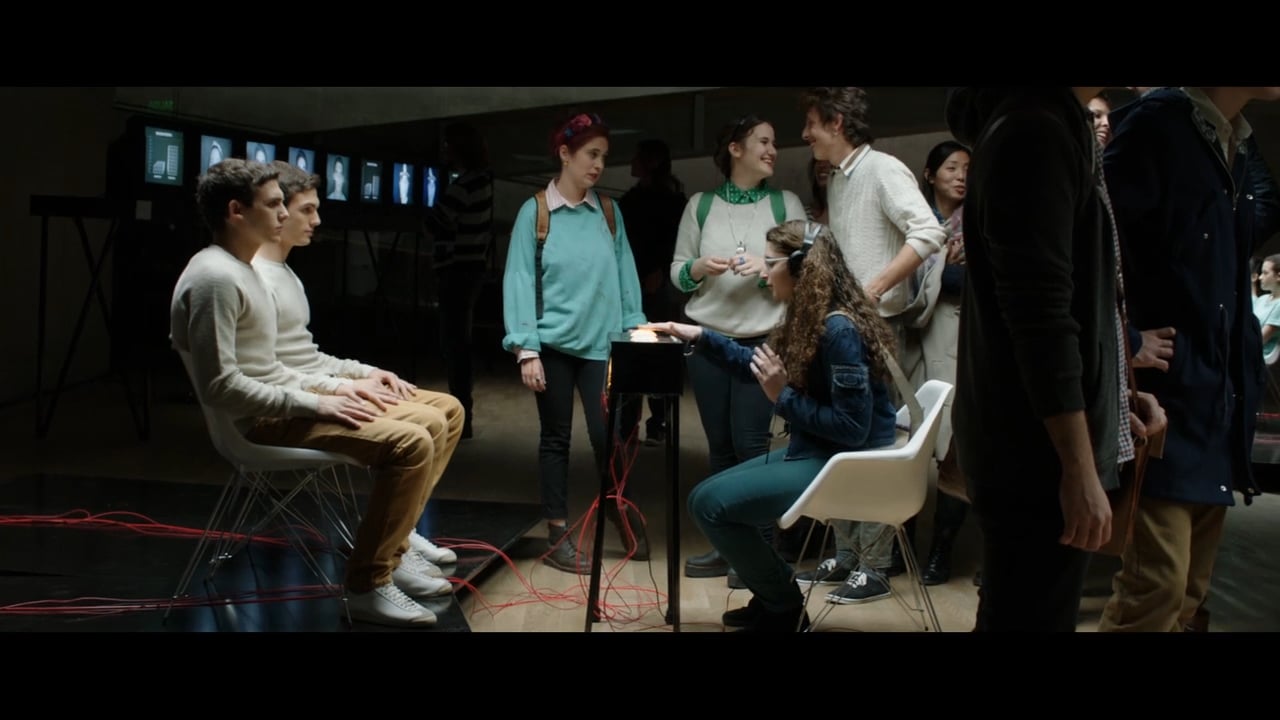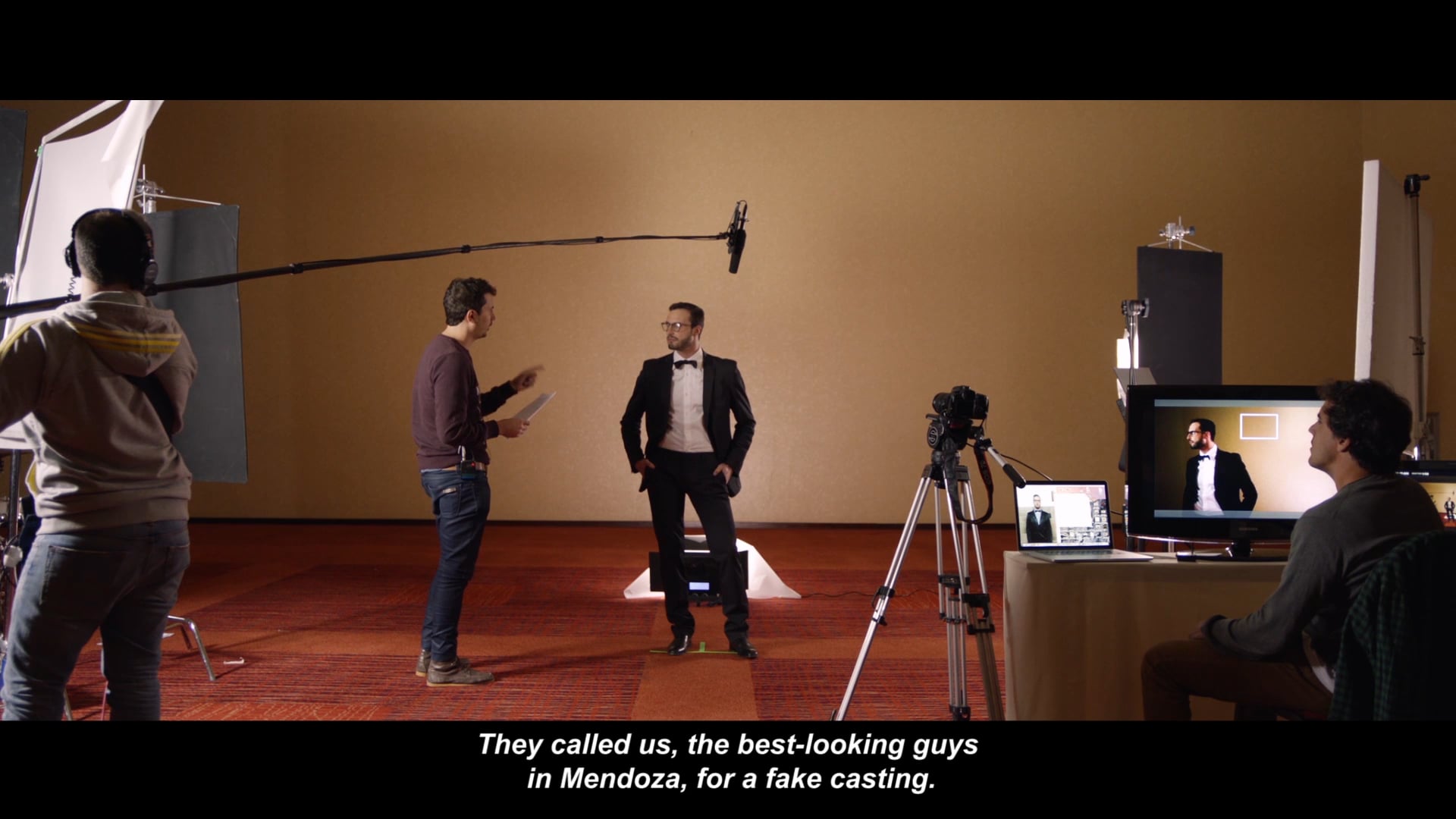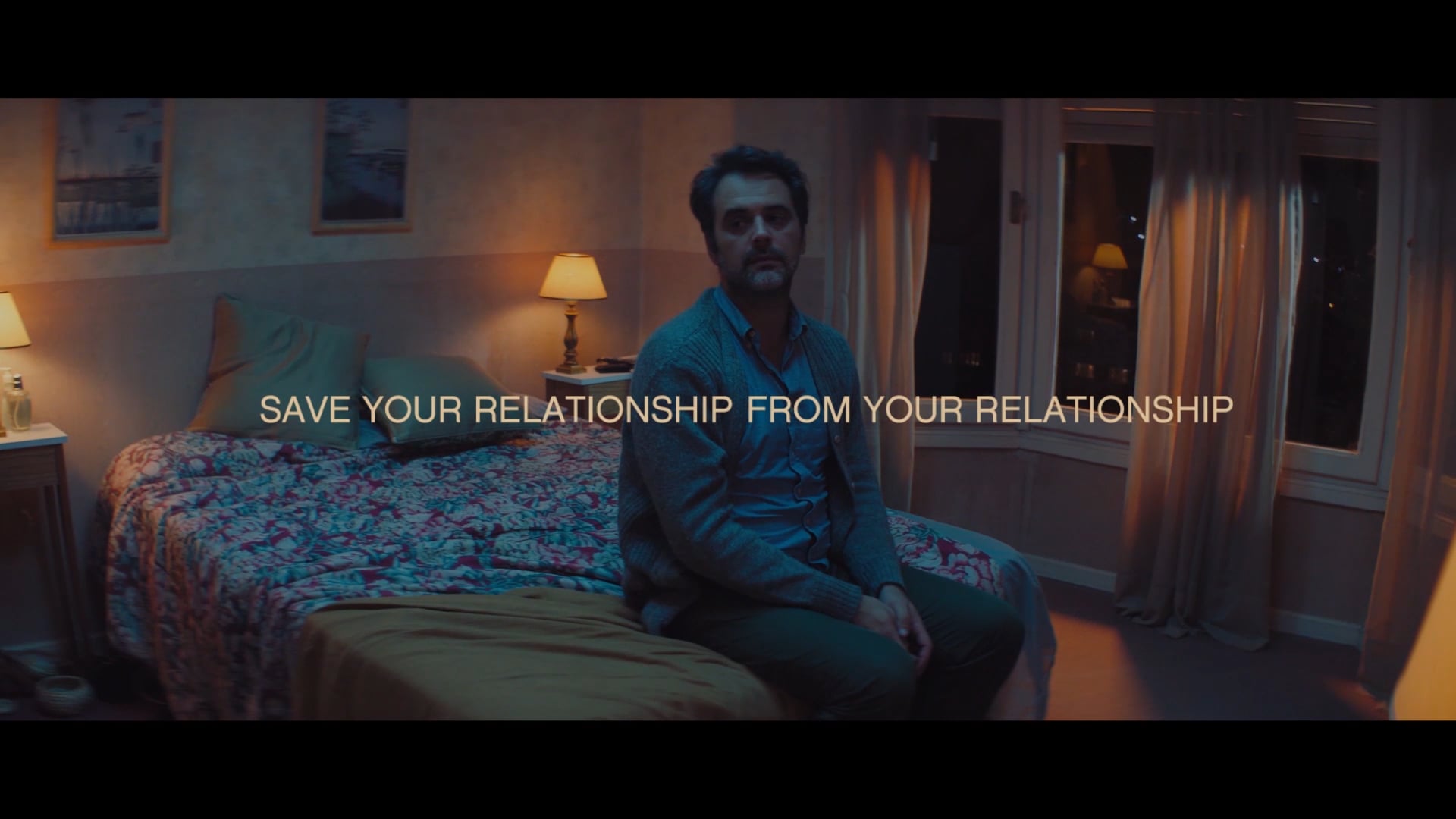The 1.4 jury and audience particularly loved your film Bodybuilder for Ponds but our favourite lol one is Race for chewing gum brand Topline which cleverly juxtaposes thoughts into animation. To what extent do you become involved in the development of the idea with agency creatives?
I just love getting involved with developing the idea. I think a collaborative approach with agency to the narrative process often has the best creative results.
In the cases you mention, the scripts were already quite solid in narrative and conceptual terms, so my work had more to do with finding the right tone. In the case of Bodybuilder, I would say the work was about stripping it down, that is, working with the agency to simplify the narrative as much as possible and making the humour dry and austere. In the case of Topline, there was a lot of improvisation with the main character’s lines.
Do ideas come readily when you see a brief or is it a more laboured process?
When I read a script, I might have a very vague impression of what the film might look like. Probably I will have in mind a few images, maybe the idea of a certain narrative tone. But later, as things move forward, ideas keep popping up and continually reshape the process.
Everything that revolves around acting and actors is critical to me. The first encounter of anything that’s written down on paper with actors is always a very defining and transformative moment. I tend to think of the casting process not only as a way to find the proper actor for the part but also as a stage where I’m confronted with the script in a much more concrete way. I always discover new ideas, put in doubt a lot of previous ones, and rethink mostly at this stage.
Do you ever write your own narratives for commercials – or perhaps for personal projects?
I love to write. I studied literature for a while and have written a couple of short films I shot. Nowadays I’m starting to develop a feature film. So I keep writing bits and pieces every time I have the opportunity.
When shooting commercials I like to get involved in the narrative whenever I get the opportunity. But the way this process works and amount of freedom for this type of involvement, varies significantly from project to project.
Your spot for Movistar – is chilling but also more effective because the visuals are subtle. What was the original brief for this and how did you evolve it?
This is one of the cases where agency and client allowed a lot of freedom. As soon as I read the original script the agency sent me, I loved it. The concept was there, simple and elegant. I have to say the process was very enjoyable, and agency and client really supportive.
My first impression was that we had to do away with all the cliché scenes that would represent a life: things like a wedding, a birth, etc,and instead look for very small, intimate moments. I wanted to achieve some kind of “dreamy” narrative, made up of things that felt almost trivial but at the same time had a lot of emotional weight. I felt the spot would only truly work if the scenes felt authentic, spontaneous, almost melancholic.
I suggested to leave out any VFX ideas to illustrate the concept of time moving backwards, because I felt any fancy visuals would work against achieving a truly emotional spot.
Again, and I cannot stress this enough, the agency and client were really supportive. Usually, when working with actors I prefer to keep options open. For every location we would have a list of ideas we wanted to try out. What made the final cut is a mixture of scenes, part written and part improvised on set.
What is your process for getting the best performance from the actors? Is casting until you have the right characters key? And do you spend time rehearsing / workshopping before a shoot?
I work a lot with improvisation. So casting is a key element of my process. I usually cast a lot and work a lot on call-backs. I believe casting the right actor is a major part of the job.
I like to keeps things alive and spontaneous, so I don’t really rehearse. What I often try to do is establish a framework so as to allow the biggest amount of freedom possible during the actual shooting. Sometimes I will bring a list of ideas to try out with actors on set, but tend to avoid rehearsing because I’m cautious of things becoming “fossilized”.
Have there been any happy accidents where a narrative has changed course – maybe in the edit or something has happened on set?
Yes!. I love it when unexpected things occur in front of camera and actually believe it’s part of my job to capitalise on this . Whenever I believe a scene has become too comfortable for actors I will try to throw in a disruptive element … 99% of the time this will come to nothing but sometimes you get the lucky 1%.
Orson Welles said “A director is somebody who presides over a series of accidents.”
Do you meticulously pre-visualize?
I wouldn’t say I’m meticulous. In terms of visuals, I usually work with mood boards. But again, I’m open to things transforming in the process. I am, rarely, very particular about a specific kind of shot or visual idea. I tend to approach visuals in a much looser way.
Is the tone of your work a reflection of your character?
I don’t really know. But I guess it is. The funny thing for me is that I had never thought of myself as having a strong connection to comedy narratives. I kind of got into shooting a lot of acting stuff because my background had to do with directing actors. Ads focused on performance are, almost by definition in Argentina, humour spots. So that’s the way it went. But my own personal taste in movies and literature is probably more in touch with more dark, gloomy and dense stories. In a way, I guess that kind of helped me develop a certain angle from where to build a tone and taste for humour.
Were you brought up in a particularly creative environment? Where was home then and where is it now?
I wouldn’t say so. I grew up in kind of traditional, conservative suburb outside Buenos Aires. Being the son of a dentist and psychoanalyst my house was not really connected to any artistic environment. I did however, grow up surrounded by plenty of books and read a lot as a kid.
Probably my first real connection to a creative atmosphere had to do with my older bother. When I was about 10 or 11 years he enrolled in communications studies and started shooting short films, taking pictures and acting classes. I used to help him and that connected me at a young age to the filmmaking world. I started watching other movies, going to the theatre, etc.
Buenos Aires was then home, and it still is, though I spend a lot of time abroad shooting.
What was your route into directing?
I think I was kind of lucky starting to direct at a young age and at a time, I believe, was particularly effervescent for the advertising world in Argentina.
My route to directing wasn’t very traditional in terms of working my way up the ladder. Out of film school I shot a short film, which got the attention of a small production company in Argentina. I was offered to start directing TV commercials without really knowing what the job actually meant.
How do you think your particular humour is going to travel outside of Argentina? Silly question because we know your particular eye for the absurd connects universally.
Fortunately it seems to resonate in many parts of the world. In fact, I mostly work outside Argentina nowadays. It’s always still strange and rewarding when you get a call from distant places where somebody has liked your work.
Diego Nuñez Irigoyen is represented by Knucklehead in the UK
